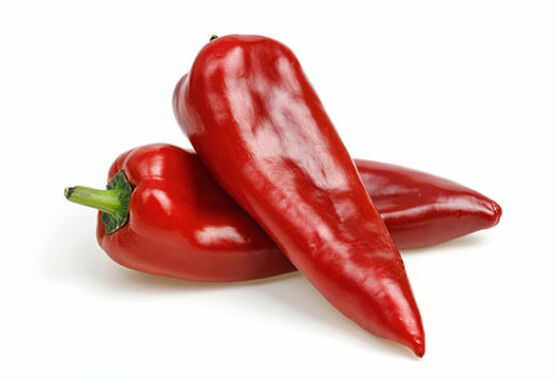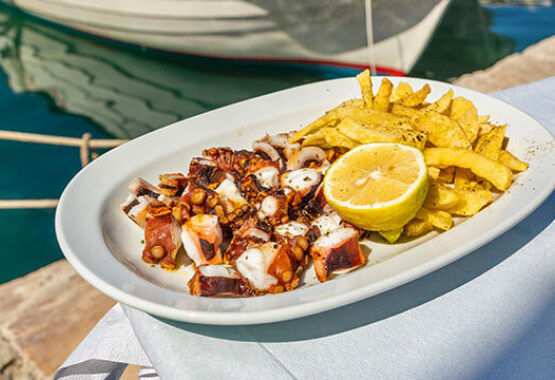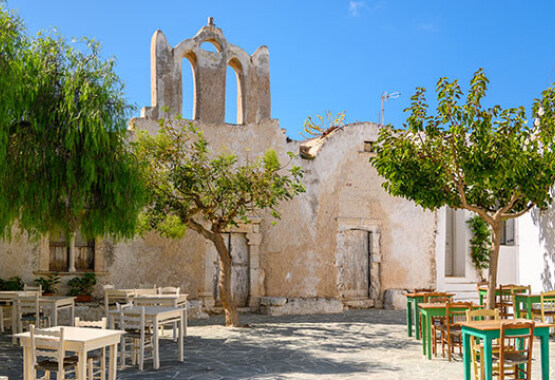
KYTHNOS
Known for the hospitality and simplicity of its some 1,500 inhabitants, Kythnos is an island of white-wached villages, about a hundred beaches and the famous thermal springs, where King Othonas and Queen Amalia bathed. However, a lesser known side is the wide variety of traditional products, available in every corner of the island.
Famous Cheese Products
The island’s cuisine has many interesting factors, but none is more renowned than its large variety of cheese.
Trima (or zimoto, as the locals call it) is the flagship of the island's cheese-making industry. With its roots stretching back to antiquity, when it was called Kythnio cheese, trima has a sour, buttery taste and a subtle saltiness. It is an ideal accompaniment to tsipouro, and it is found in a number of local recipes.
The second most popular cheese of Kythnos, kopanisti, which comes from processed trima cheese. It has a peppery taste and an inviting aroma that becomes more intense with time.
The list of the most characteristic cheeses of Kythnos also includes tyrovoli, a local variation on the well-known kefalotyri, which is produced mainly in the northern part of the island.
Feta has recently arrived at the island but has nothing to do with the famous product everyone knows, as this version is a white brine cheese made from goat’s and sheep’s milk.
On the other hand, xino cheese forms the basis of many of the local cheese-based products. It is soft, unsalted and sourish and is included in many traditional recipes that have been passed down through the generations.
Traditional Pies
One of the trump cards of the local cuisine are its pies, and the emblematic sfoungato made from local cheese. This is essentially a variation of the cheese pie, which some call cheese croquette. The sfoungato has a dough made with local soft cheese (usually xino or trima), which is fried in hot oil and served hot.
Those preferring a more traditional approach can try the pitaro, which is a cheese pie stuffed with fresh cheeses from local producers.
Poulos is among the famous island dishes based on flour. It is a piece of salted pork, which, as it is baked, lard seeps into the bread dough that it is wrapped in.
Kolopi is the local vegetable pie, which some people still fill with wild greens, fennel, onions and rice, as tradition dictates. The modern version is made with spinach and dill.
An equally famous delicacy of Kythnos is the koukoulopita (hood pie), which takes its name from the hood-shaped dough containing its delicious filling. It is a blend of unsalted cheese, eggs, fresh onion leaves and a little cinnamon.
Produce of the Land of Kythnos
Legumes are a fundamental pillar of the local cuisine and make their presence in many of the island’s recipes. White and black beans, chickpeas and broad beans are part of the daily diet of the inhabitants and quite often are accompanied by green vlita or string beans. In addition, the household table would not be complete without the freshest tomatoes, onions, aubergines and garlic. Among the main food “suppliers” are the fruit trees of Kythnos, providing lemons, pears, quinces, pomegranates, apricots, plums. Capers hold a special place, and are present in one of the most famous dishes of Kythnos, the caper salad, which also includes boiled potato, fine olive oil and lemon or vinegar.
The numerous vineyards, which cover a total of some 65 hectares, also play an important role in the island’s diverse culinary tradition, as they provide the raw material for the production of excellent local wines. The white grape varieties grown in Kythnos are the Savvatiano, Potamisi, Sasala, Aspradi and Rousiko. Red varieties include Mandilaria, Potamisi black, Psarosyriko, Tsampatos, Rousiko and Serfiotiko, as well as the Sideritis and Roditis.
The island also offers excellent quality fish and meat from sheep and goats, as well as the much-touted thyme honey, which has been exported from the island since the 17th century. Those with a sweet tooth should try the local pasteli (sesame-bar), with sesame and honey, the almond cookies, the traditional spoon sweets and the small sweet cheese pies.
The traditional products of Kythnos
Kythnos, located between the islands of Tzia (Kea) and Serifos, is just two hours away from the port of Lavrio and about three from the port of Piraeus, and is the ideal short getaway destination filled with Cycladic beauty and tranquility.Known for the hospitality and simplicity of its some 1,500 inhabitants, Kythnos is an island of white-wached villages, about a hundred beaches and the famous thermal springs, where King Othonas and Queen Amalia bathed. However, a lesser known side is the wide variety of traditional products, available in every corner of the island.
Famous Cheese Products
The island’s cuisine has many interesting factors, but none is more renowned than its large variety of cheese.
Trima (or zimoto, as the locals call it) is the flagship of the island's cheese-making industry. With its roots stretching back to antiquity, when it was called Kythnio cheese, trima has a sour, buttery taste and a subtle saltiness. It is an ideal accompaniment to tsipouro, and it is found in a number of local recipes.
The second most popular cheese of Kythnos, kopanisti, which comes from processed trima cheese. It has a peppery taste and an inviting aroma that becomes more intense with time.
The list of the most characteristic cheeses of Kythnos also includes tyrovoli, a local variation on the well-known kefalotyri, which is produced mainly in the northern part of the island.
Feta has recently arrived at the island but has nothing to do with the famous product everyone knows, as this version is a white brine cheese made from goat’s and sheep’s milk.
On the other hand, xino cheese forms the basis of many of the local cheese-based products. It is soft, unsalted and sourish and is included in many traditional recipes that have been passed down through the generations.
Traditional Pies
One of the trump cards of the local cuisine are its pies, and the emblematic sfoungato made from local cheese. This is essentially a variation of the cheese pie, which some call cheese croquette. The sfoungato has a dough made with local soft cheese (usually xino or trima), which is fried in hot oil and served hot.
Those preferring a more traditional approach can try the pitaro, which is a cheese pie stuffed with fresh cheeses from local producers.
Poulos is among the famous island dishes based on flour. It is a piece of salted pork, which, as it is baked, lard seeps into the bread dough that it is wrapped in.
Kolopi is the local vegetable pie, which some people still fill with wild greens, fennel, onions and rice, as tradition dictates. The modern version is made with spinach and dill.
An equally famous delicacy of Kythnos is the koukoulopita (hood pie), which takes its name from the hood-shaped dough containing its delicious filling. It is a blend of unsalted cheese, eggs, fresh onion leaves and a little cinnamon.
Produce of the Land of Kythnos
Legumes are a fundamental pillar of the local cuisine and make their presence in many of the island’s recipes. White and black beans, chickpeas and broad beans are part of the daily diet of the inhabitants and quite often are accompanied by green vlita or string beans. In addition, the household table would not be complete without the freshest tomatoes, onions, aubergines and garlic. Among the main food “suppliers” are the fruit trees of Kythnos, providing lemons, pears, quinces, pomegranates, apricots, plums. Capers hold a special place, and are present in one of the most famous dishes of Kythnos, the caper salad, which also includes boiled potato, fine olive oil and lemon or vinegar.
The numerous vineyards, which cover a total of some 65 hectares, also play an important role in the island’s diverse culinary tradition, as they provide the raw material for the production of excellent local wines. The white grape varieties grown in Kythnos are the Savvatiano, Potamisi, Sasala, Aspradi and Rousiko. Red varieties include Mandilaria, Potamisi black, Psarosyriko, Tsampatos, Rousiko and Serfiotiko, as well as the Sideritis and Roditis.
The island also offers excellent quality fish and meat from sheep and goats, as well as the much-touted thyme honey, which has been exported from the island since the 17th century. Those with a sweet tooth should try the local pasteli (sesame-bar), with sesame and honey, the almond cookies, the traditional spoon sweets and the small sweet cheese pies.




